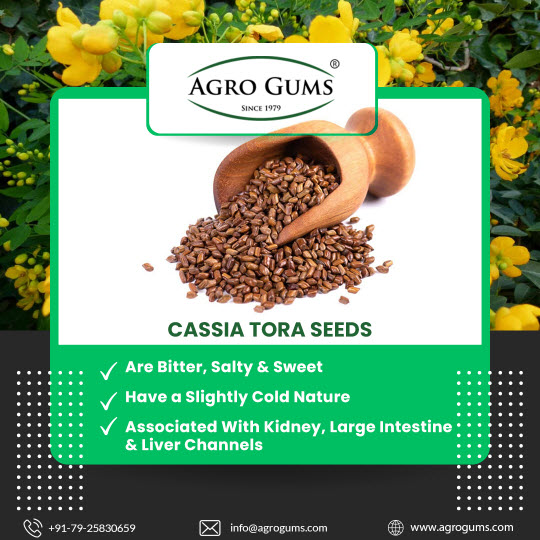In the ever-evolving world of animal nutrition, guar meal has emerged as a valuable ingredient in poultry feed. Derived from the processing of guar beans, this byproduct is gaining popularity among poultry farmers for its rich nutritional profile and multiple benefits. As the poultry industry seeks sustainable and cost-effective solutions, incorporating guar meal into feed formulations presents a promising option.
This article delves into the benefits of guar meal in poultry feed, its nutritional composition, and its role in promoting optimal growth and health in poultry.
Understanding Guar Meal
Guar meal is the byproduct of guar gum extraction, which involves milling the seeds of the guar plant (Cyamopsis tetragonoloba). After the seeds are processed for guar gum, the remaining meal is rich in protein, fiber, and essential nutrients. Guar meal has gained recognition as a high-quality feed ingredient for poultry due to its favorable amino acid profile and digestibility.
Nutritional Benefits of Guar Meal for Poultry

1. High Protein Content
One of the primary advantages of guar meal is its high protein content, typically ranging from 30% to 40%. This makes it an excellent source of protein for poultry, which is essential for growth, egg production, and overall health. The amino acids found in guar meal, particularly lysine and methionine, are crucial for poultry nutrition, supporting muscle development and enhancing egg quality.
2. Digestible Fiber
Guar meal is also a source of soluble and insoluble fiber, which can be beneficial for the digestive health of poultry. The soluble fiber in guar meal acts as a prebiotic, promoting the growth of beneficial gut bacteria. This helps improve nutrient absorption and supports a healthy gut microbiome, which is vital for the overall health and productivity of birds.
3. Cost-Effective Ingredient
As the poultry industry faces rising feed costs, guar meal offers a cost-effective alternative to traditional protein sources. Its high protein content and availability make it an attractive option for poultry producers looking to optimize their feed formulations without sacrificing quality. Incorporating guar meal can help reduce overall feed costs while maintaining nutritional standards.
4. Enhancing Feed Efficiency
Feeding poultry with guar meal can improve feed efficiency, allowing birds to convert feed into body weight or egg production more effectively. The digestibility of guar meal contributes to this increased efficiency, enabling poultry to extract more energy and nutrients from their feed. This can lead to improved weight gain, reduced feed waste, and higher profitability for poultry farmers.
5. Promoting Egg Quality
In layer poultry, the inclusion of guar meal in the diet has been shown to enhance egg quality. The amino acids and nutrients present in guar meal contribute to better shell strength and improved yolk quality, resulting in healthier eggs. This is particularly important for producers aiming to meet market demands for high-quality eggs.
Incorporating Guar Meal into Poultry Diets
When integrating guar meal into poultry diets, it is essential to consider the appropriate inclusion levels and feed formulation strategies. The optimal level of guar meal in poultry feed can vary depending on factors such as the age of the birds, their production stage, and the overall feed composition. Generally, incorporation levels of 5% to 20% of total feed are recommended.
To achieve balanced nutrition, it is crucial to formulate the feed considering the amino acid profile of guar meal in conjunction with other feed ingredients. Poultry nutritionists often recommend blending guar meal with traditional protein sources, such as soybean meal or fish meal, to ensure a complete and balanced diet.
Considerations for Using Guar Meal
While guar meal offers numerous benefits, there are some considerations to keep in mind when incorporating it into poultry feed:
1. Anti-Nutritional Factors:
Guar meal may contain anti-nutritional factors such as trypsin inhibitors, which can interfere with protein digestion if present in high amounts. However, proper processing and heat treatment can reduce these factors, making guar meal safe and effective for poultry feed.
2. Nutrient Imbalance:
When formulating diets, it’s essential to ensure that the inclusion of guar meal does not lead to nutrient imbalances. Monitoring the overall amino acid profile, fiber levels, and energy content of the feed is critical to prevent deficiencies and optimize bird performance.
3. Gradual Inclusion:
If introducing guar meal into the diet for the first time, it’s advisable to start with lower inclusion levels and gradually increase them. This approach allows the birds to adjust to the new feed ingredient and helps avoid any potential digestive issues.
The Future of Guar Meal in Poultry Nutrition
The increasing demand for sustainable and nutritious feed ingredients in the poultry industry highlights the potential of guar meal as a valuable addition to poultry diets. As research continues to explore the benefits and applications of guar meal, it is likely to gain further recognition as an integral component of modern poultry nutrition.
With the poultry industry focusing on optimizing feed efficiency and sustainability, guar meal can play a significant role in achieving these goals. By harnessing the nutritional advantages of guar meal, poultry producers can enhance growth performance, improve egg quality, and promote the overall health of their flocks.
FAQs About Guar Meal
Conclusion
Guar meal is becoming an increasingly important ingredient in poultry nutrition, offering numerous benefits that enhance the overall health and productivity of birds. Its high protein content, digestible fiber, and cost-effectiveness make it an attractive option for poultry producers seeking sustainable and efficient feed solutions. By incorporating guar meal into poultry diets, farmers can optimize growth, improve egg quality, and contribute to a more sustainable poultry industry. As the demand for nutritious and sustainable feed ingredients grows, guar meal is poised to play a significant role in shaping the future of poultry nutrition.
Web Design & Digital Marketing by Opal Infotech

